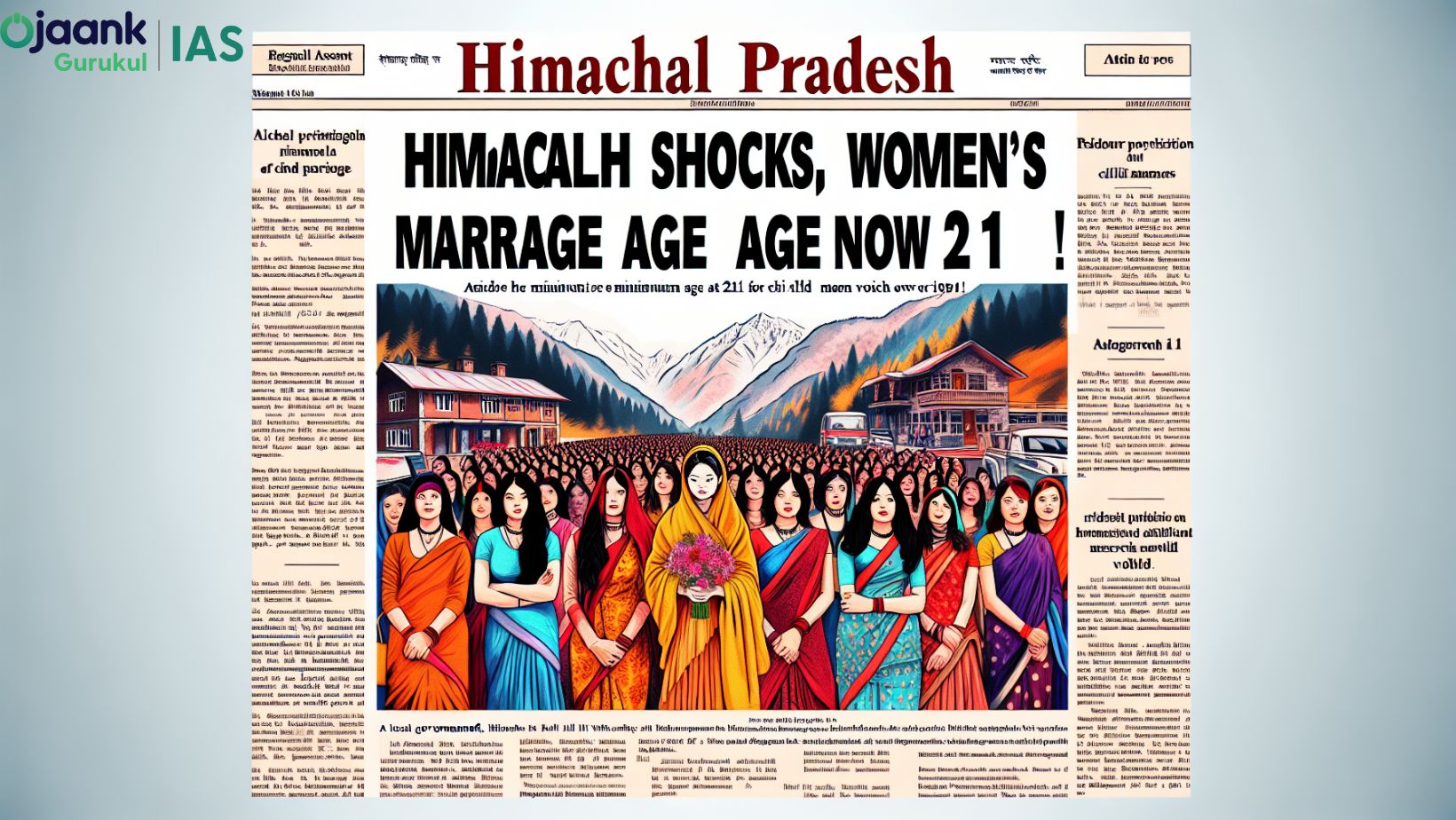Himachal Pradesh Shocks the Nation: Women's Marriage Age Now 21!

1. What does the Prohibition of Child Marriage (Himachal Pradesh Amendment) Bill, 2024 aim to achieve?
The Bill aims to equalize the minimum age of marriage at 21 for both women and men in Himachal Pradesh, amending the existing Prohibition of Child Marriage Act of 2006.
2. Why was it necessary to raise the minimum age of marriage for women according to the Health, Social Justice, and Empowerment Minister?
Minister Dhani Ram Shandil stated that raising the age is necessary to provide better educational and career opportunities for women, and to help prevent early marriages that can negatively impact their health and career progress.
3. What major amendments does the Bill introduce to the Prohibition of Child Marriage (PCM) Act?
The Bill removes the gender-based age distinction for marriage, sets the minimum age at 21 for both sexes, extends the time period for annulment of child marriages, and gives the amended PCM Act overriding effect over other laws and customs.
4. How does the Bill address marriages that are contracted under personal or cultural laws?
The Bill includes a clause that gives it overriding effect over any other law, custom, or usage that allows child marriages, ensuring the new minimum age applies universally within Himachal Pradesh.
5. What is the new time period for filing a petition to annul a marriage under the amended PCM Act?
The period has been increased to five years from attaining majority, allowing individuals up to the age of 23 to file for annulment if they were married as children.
6. How will the amendments made by the Himachal Pradesh Bill to the PCM Act come into force?
Since the Bill modifies a central law, it must be reserved for the President's consideration and assent under Article 254(2) of the Constitution, as it contains provisions that are repugnant to the existing central law.
7. What happens if the President does not assent to the Bill?
If the President withholds assent, the repugnant provisions of the Bill will not come into effect and will be considered void under Article 254(1) of the Constitution.
8. What constitutional provisions allow the Himachal Pradesh Assembly to enact this amendment?
Entry 5 of the Concurrent List under the Seventh Schedule of the Constitution allows both the state and central governments to legislate on matters like marriage and divorce, enabling the state to amend the PCM Act.
9. How does the Governor fit into the process of turning the Bill into law?
The Governor of Himachal Pradesh must first reserve the Bill for the President’s consideration. The Governor can either assent to the Bill, return it for reconsideration, or reserve it for the President, depending on its content and implications.
10. What precedent is there for such a legislative process regarding marriage laws in India?
similar legislative process was observed with Uttarakhand’s Uniform Civil Code Bill, which also involved amendments affecting marriage and required the President’s assent after being passed by the state assembly.
By Ojaank Sir